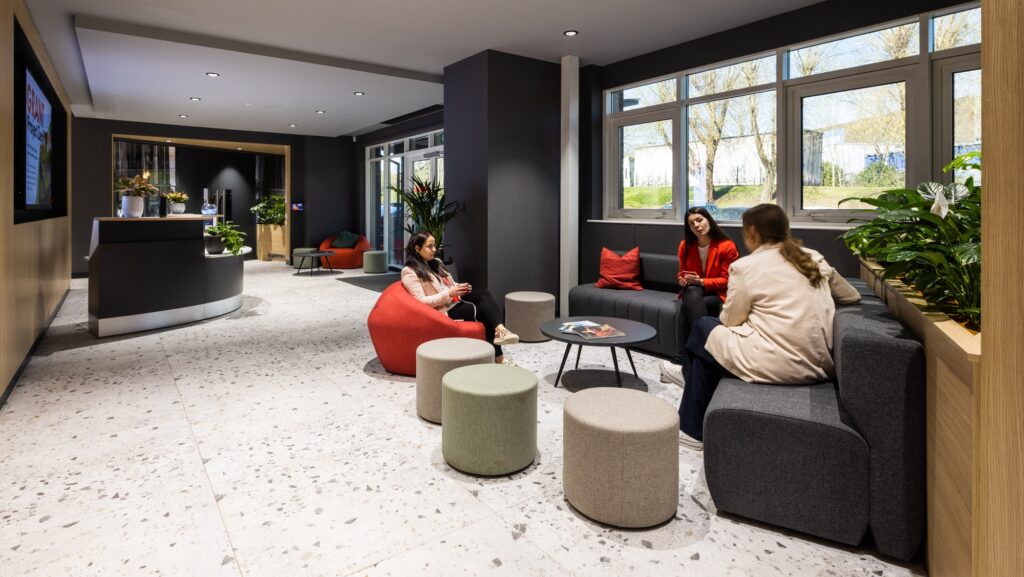With UK employment costs set to rise again this April, businesses are facing significant pressures relating to both people and place. According to the Centre for Policy Studies, the rise in employer national insurance rates to 15% and the reduction of the payment threshold to £5,000 will increase the costs to employers significantly.
These rising costs are a major concern for many UK businesses, prompting leaders to scrutinise and consider all aspects of business operations. As a result, it is no surprise that business leaders are now questioning whether their office spaces can drive a positive return on investment (ROI) in the year ahead.
The key to navigating these challenges lies in how the workplace is used, with the opportunity to transform underutilised office space from a balance sheet liability to an integral strategic asset.
The value of considered workspace design
Traditional office setups, often characterised by rows of desks and chairs, will increasingly become poor investments this year. This is due to the outdated design based on pre-pandemic ways of working, with a lack of flexibility for the diverse nature of work undertaken by businesses today.
As colleague expectations rise, it will be businesses that offer amenity-rich workplaces that are likely to attract their people back to the office regularly and with intention. Workspaces today need to offer a variety of work areas, breakout areas and high-performance technology solutions to win employees over.
One common mistake businesses make when considering a move is to treat workplace design as an afterthought. To truly harness the potential of the workplace as a strategic asset, businesses should engage in a comprehensive consultation with workplace design experts to audit and assess the role of the office in the initial stages of planning an office move.
Introducing purpose-led workspaces
Purpose-led workspaces are designed with the specific needs and goals of the business in mind. These spaces go beyond the basics to create environments that foster collaboration, innovation and employee wellbeing. By aligning the office environment with the company’s mission and values, businesses can enhance employee engagement and drive optimal productivity. Quiet zones for focused work, collaborative spaces for team projects, and relaxation areas for breaks all contribute to a more dynamic and productive workplace.
Creating amenity-rich environments
In addition to purpose-led design, amenity-rich environments are becoming increasingly important in attracting staff back to the workplace. These workplaces draw people away from home by offering a range of facilities and services that enhance the employee experience. From on-site gyms and wellness programmes to cafes and social spaces, these amenities can make the office a social hub that addresses employee needs in more comprehensively.
In a competitive employment market, offering a workplace that prioritises employee wellbeing and convenience can be a significant differentiator. Moreover, these investments can lead to long-term savings by decreasing the time to hire new staff, reducing turnover and improving employee engagement.
Technology and innovation expectations are rising
It is more important than ever for businesses to ensure they are embracing technology innovations as Gen Z are the third-largest generation in the UK’s labour force.
To attract talent from this generation, businesses must be willing to embrace fresh ideas and innovation, offering technology that matches the standards employees and clients enjoy in their personal lives.
Contemporary technology solutions, such as smart office systems and AI, can streamline operations and improve efficiency. For instance, integrated building management systems can optimise energy use, reducing costs and environmental impact. Additionally, advanced communication tools can facilitate remote work and collaboration, making it easier for teams to stay connected and productive.
Taking the office from a fixed cost to a strategic asset
As employment costs continue to rise, business leaders must consider transforming their workspaces from a cost into a strategic asset by creating purpose-led, amenity-rich workplaces that support business goals.
Kerr Office Group offers a five-step blueprint to help support this transformation.
- Audit current workplace use: Understand how the space is currently being used and areas for improvement
- Engage your team to understand their needs and preferences: How do they currently use the space and what do they feel they really need?
- Create a workplace strategy that aligns business objectives and colleague needs: Consider hybrid working policies, technology integration and expectations, how you support colleague wellbeing.
- Explore the most appropriate workspace design: Various work settings can improve employee experience and support different work styles.
- Clear, compelling communications: Provide a continual dialogue with colleagues regarding your rationale for a workplace strategy, with plenty of opportunities to gather and respond to their feedback.






